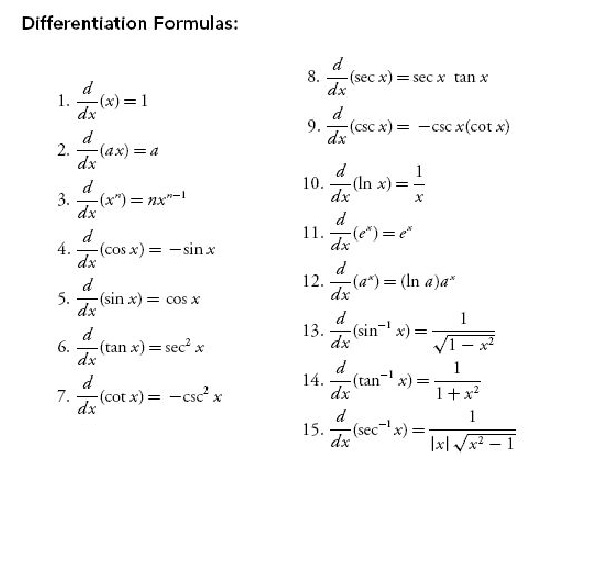Differentiability

● If `f` is a real function and `c` is a point in its domain. The derivative of `f` at `c` is defined by `color{red}{lim_(h-> 0) (f(c+h)-f(c))/h}`
●So a function `f` is differentiable at a point `c` in its domain if both `lim_(h-> 0^-) (f(c+h)-f(c))/h` and `lim_(h-> 0^+) (f(c+h)-f(c))/h` are finite and equal.
`color{blue}{lim_(h-> 0^-) (f(c+h)-f(c))/h = lim_(h-> 0^+) (f(c+h)-f(c))/h}`
●Derivative of `f` at `c` is denoted by `f '(c)` or `d/(dx) (f(x))|_c` The function defined by
`f'(x) =lim_(h->0) (f(x+h)-f(x))/h`- The derivative of `f` is denoted by `f ' (x)` or `d/(dx) (f(x))` or `y'` `f (x)` with respect to `x` to mean find `f '(x)`.
The following rules of algebra of derivatives :
(1) `(u pm v)' = u' pm v'`
(2) `(uv)'= u'v + uv'` (Leibnitz or product rule)
(3) `(u/v)' =((u'v -uv')/v^2)` wherever `v != 0` (Quotient rule).
The following table gives a list of derivatives of certain standard functions:
| `f(x)` | `x^n` | `sin x` | `cos x` | `tan x` |
| `f'(x)` | `nx^(n-1)` | `cos x` | `-sin x` | `sec^2 x` |
Differentiation formulas list :








